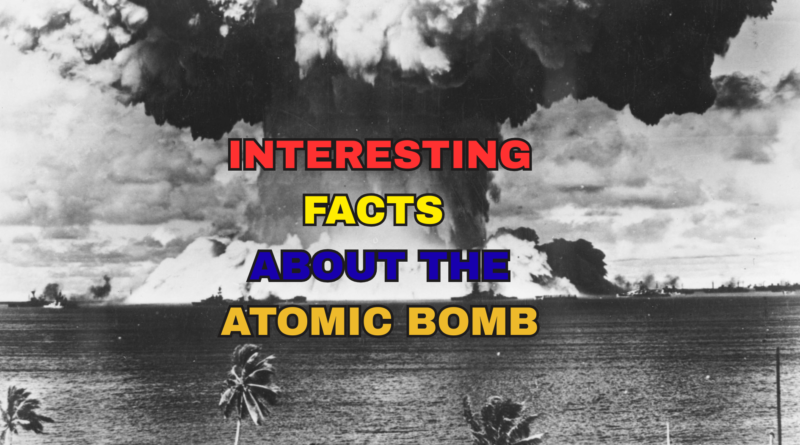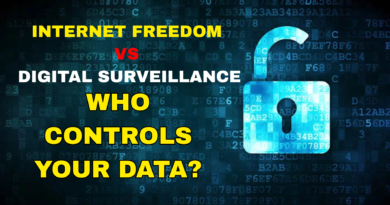INTERESTING FACTS ABOUT THE ATOMIC BOMB
The Beginning of the Nuclear Age
The first atomic bomb was developed during World War II under a secret U.S. project called the Manhattan Project. Launched in 1939 and led by physicist J. Robert Oppenheimer, this project employed over 130,000 people and cost nearly $2 billion at the time. Its aim was to harness the power of nuclear fission for military use, marking the dawn of the nuclear age.
Trinity Test – The First Detonation
The first-ever nuclear explosion, codenamed Trinity, occurred on July 16, 1945, in the New Mexico desert. The explosion released energy equivalent to around 21,000 tons of TNT, turning sand into radioactive glass and producing a massive mushroom cloud visible for miles. The success of this test confirmed that atomic weapons could be used in warfare.
Hiroshima – The First Atomic Attack
On August 6, 1945, the U.S. dropped the first atomic bomb used in combat on Hiroshima, Japan, from a B-29 bomber named Enola Gay. The bomb, nicknamed “Little Boy,” used uranium-235 and instantly killed around 70,000 people, with the death toll rising to over 140,000 from radiation and injuries within a year.
Nagasaki – The Second Strike
Just three days later, on August 9, 1945, a second bomb called “Fat Man” was dropped on Nagasaki. Unlike Little Boy, Fat Man used plutonium-239. It caused about 40,000 immediate deaths, with total fatalities reaching nearly 80,000. The devastation led Japan to surrender on August 15, 1945, effectively ending World War II.
Unimaginable Heat and Pressure
An atomic bomb explosion releases temperatures of millions of degrees Celsius, hotter than the surface of the sun. The blast wave travels faster than the speed of sound, flattening buildings, igniting fires, and vaporizing everything near ground zero. Survivors described shadows burned into walls and flash burns caused by intense light radiation.
Radiation – The Silent Killer
Beyond the initial blast, atomic bombs cause long-term damage through ionizing radiation. Survivors, known as hibakusha, suffered from radiation sickness, cancers, genetic damage, and psychological trauma. Some effects passed to future generations, making nuclear fallout one of the most feared consequences of atomic warfare.
The Bomb That Was Never Used
Interestingly, the U.S. had a third atomic bomb ready in August 1945, which was to be used if Japan had not surrendered after Nagasaki. The target could have been Tokyo or another industrial center. Fortunately, the Japanese surrender rendered the third bombing unnecessary, sparing thousands of lives.
Einstein’s Involuntary Role
Though Albert Einstein did not work on the bomb directly, his 1939 letter to President Franklin D. Roosevelt, co-written with physicist Leo Szilard, warned that Nazi Germany could build an atomic bomb. This letter helped kickstart the Manhattan Project. Ironically, Einstein was a pacifist and later regretted his involvement.
The Mushroom Cloud Icon
The distinctive mushroom cloud produced by atomic bomb explosions is caused by the rapid rise of hot gases into the atmosphere. These clouds can reach heights of over 50,000 feet and span several miles in width. The iconic image became a symbol of nuclear power, both terrifying and awe-inspiring to the world.
Atomic Bomb vs. Hydrogen Bomb
The bombs used on Hiroshima and Nagasaki were fission bombs. Later, scientists developed fusion-based hydrogen bombs (H-bombs), which are over 1,000 times more powerful. The first H-bomb was tested by the U.S. in 1952, further escalating the arms race and ushering in the age of mutually assured destruction (MAD) during the Cold War.
Global Impact and Treaties
The use of atomic bombs led to decades of nuclear proliferation and fear of global annihilation. In response, treaties like the Nuclear Non-Proliferation Treaty (NPT) were signed to prevent the spread of nuclear weapons. Countries like India, Pakistan, and North Korea developed bombs later, challenging global disarmament efforts.
From Destruction to Peaceful Use
Despite its deadly legacy, nuclear science has also led to peaceful innovations. Nuclear energy powers cities, and medical uses of radiation help treat cancer. The same principles that caused destruction in 1945 are now part of critical technologies. Still, the atomic bomb remains a grim reminder of humanity’s ability to destroy itself-and the urgent need for peace.




